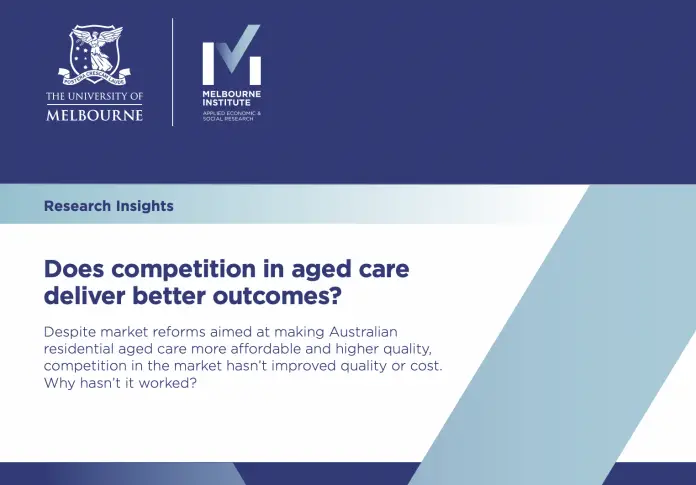Competitive market forces failed to reduce costs in aged care or drive quality outcomes because there is insufficient pricing transparency and ability to change providers, an analysis from the Melbourne Institute has found.
The research paper, Does competition in aged care deliver better outcomes?, published this week by the University of Melbourne’s applied economics group found residential aged care had not become more affordable or better quality despite the aims of the 2013 Australian Government reforms introducing competition.
Drawing on anonymised data submitted to the Royal Commission into Aged Care Quality and Safety, it said competition varied across regions but there was “no clear association between competition and quality of care or price”.
“There is no evidence that competition has significantly impacted quality and prices,” the paper said.
The measures to determine the quality of care were the hours of registered nurse care, use of psychotropic drugs, premature deaths, assaults, and complaints. None was correlated with competition except the engagement of registered nurses.
“Taken together, our results suggest market forces have failed to produce desirable outcomes in the residential aged care sector,” the paper said.
“Market failures occur when market mechanisms do not result in an efficient allocation of resources and better outcomes.
“Competition should encourage providers to innovate, be more efficient, and deliver better quality services at a lower price. But this can only happen if information about quality and prices is transparent such that consumers can choose the highest quality and lowest cost providers.
“Neither is true for the residential aged care sector in Australia.”
It found there was nine times more competition in cities, compared to regional areas. But, almost a decade after the changes to increase players in the market, the urban competition had actually reduced slightly.
The economists pointed to the Royal Commission’s call for increased funding but said that alone would not solve the challenges of aged care.
“Policies should focus on increasing transparency and increasing the regulation of providers,” they said.
Instead, they called for a public rating system and quality care indicators so consumers could have more information on which to choose a provider.
“Such a system would allow older people and their families to make meaningful comparisons of the quality and safety performance of services and providers,” they said.
“Second, price transparency, or the lack of it, is another source of market failure that requires policy actions. The current pricing structure should be simplified so that consumers can compare products and services from different providers with reasonable ease. A government-vetted and run comparison website is a solid alternative.”
They called for an independent advocate for older people when they were shopping around for aged care, saying it could be a mandatory role in home care services.
The economists also said if consumer choice was unable to push competition, then more government regulation would be needed. They suggested a pay-for-performance system that linked quality to funding.










